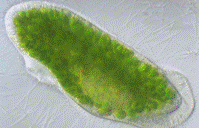Biological Sciences, School of

School of Biological Sciences: Faculty Publications
Document Type
Article
Date of this Version
2001
Abstract
Over the past 2 decades, empirical food webs have been shown to possess regular patterns of various kinds. Some of the first food web patterns were reported as “food web laws,” the most notable being the link-species scaling law. This empirically derived law described an inverse relationship between community species richness and web connectance (Cohen and Briand 1984; Cohen and Newman 1985). Subsequent evaluation of food webs constructed with more detailed data falsified (Warren 1989; Winemiller 1989a, 1990; Hall and Raffaelli 1991; Polis 1991) and modified (Warren 1990; Martinez 1991, 1992; Pimm et al. 1991; Martinez et al. 1999) many of the early food web generalizations. Martinez (1991) estimated the presence and absence of feeding links (web topology) among species recorded for Little Rock Lake and proposed a new food web pattern called “constant connectance.” Subsequent examination of other topological webs reinforced the constant connectance pattern (Martinez 1992).
Connectance (C) is the number of observed trophic links (L) divided by the total possible number of trophic links (S2), where S is the number of species in the community. The link-species scaling law predicts two predatorprey interactions per species across all values of S. In contrast, if connectance is constant, then the number of predator-prey interactions per species increases as species richness increases (Martinez 1992; Williams and Martinez 2000). Of course, this relationship also implies that average niche breadth increases as the number of sympatric species increases, a prediction exactly opposite the prediction of species packing (MacArthur and Levins 1967; Pianka 1976). Under the species packing model, interspecific competition is reduced when niche breadth and interspecific overlap in resource use decline. Much literature supports the idea that similar species (i.e., guild members) reduce interspecific competition by subdividing their use of available resources (Pianka 1974, 1976, 1986; Schoener 1974, 1982; Winemiller and Pianka 1990). Reduction in niche breadth with increasing species richness has been shown via field experiments (Werner and Hall 1976) and comparative research (Werner 1977; Fox 1981). Under species packing, the average number of predator-prey interactions per species should decline with increasing S.


Comments
Published in Am. Nat. (2001) Vol. 158, pp. 193–199. Copyright © 2001 by The University of Chicago.